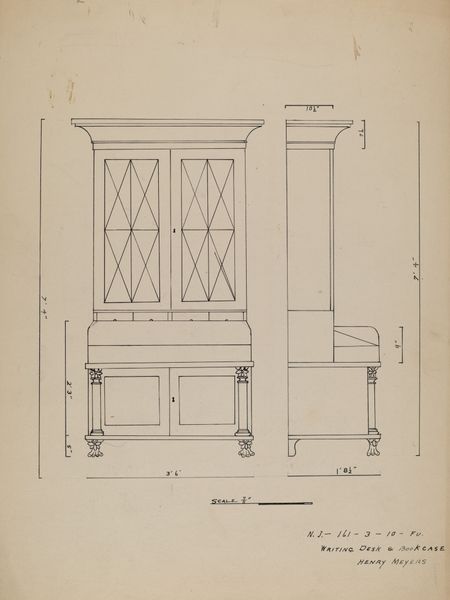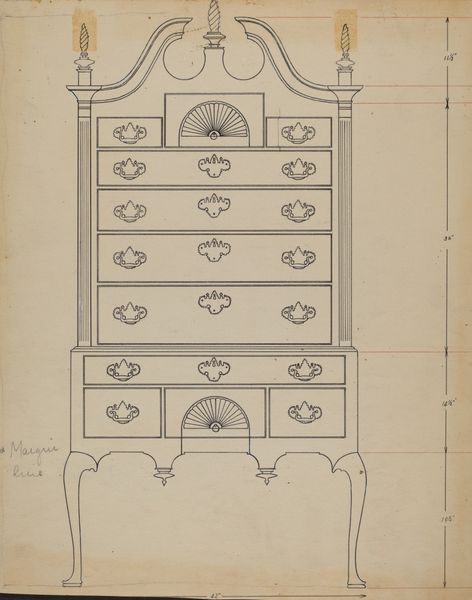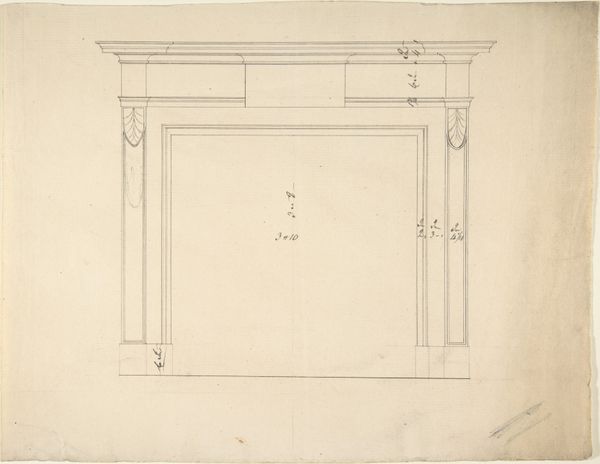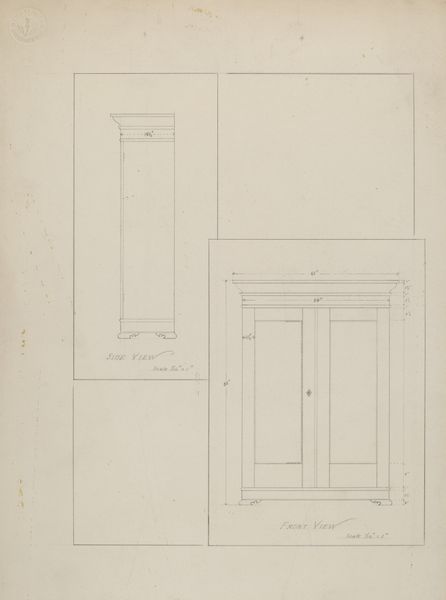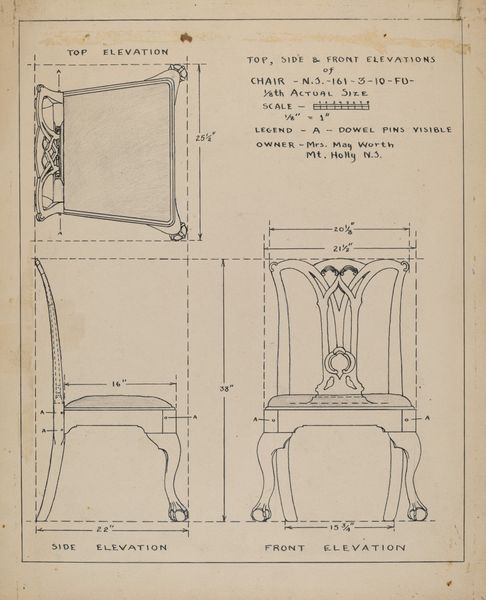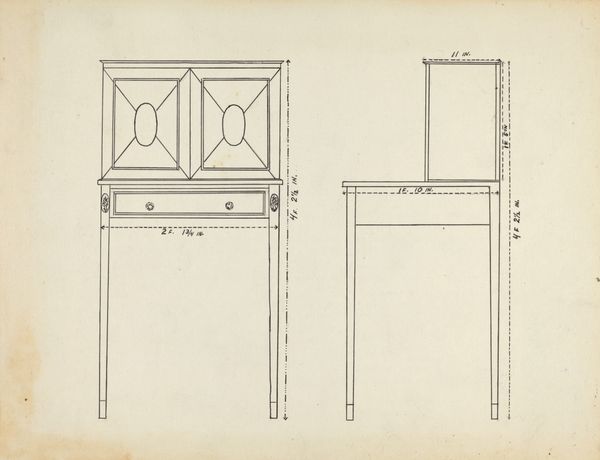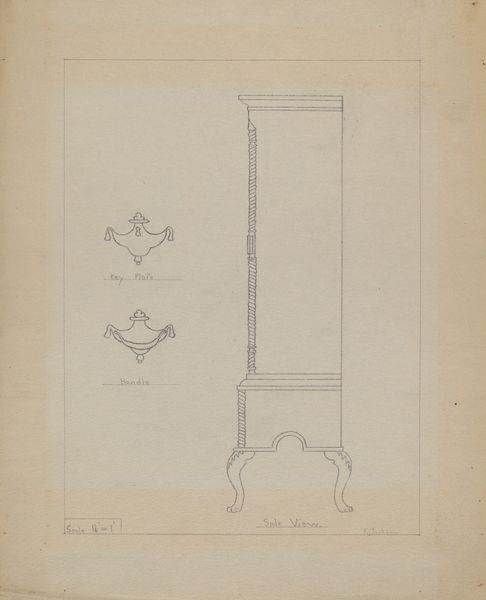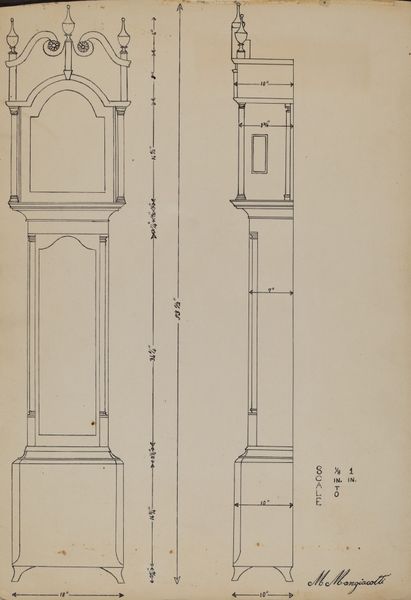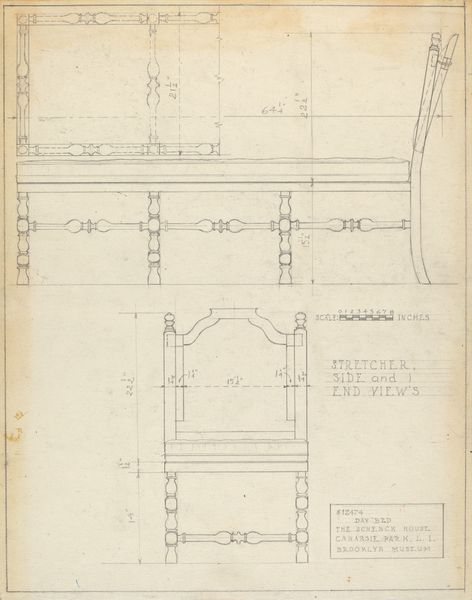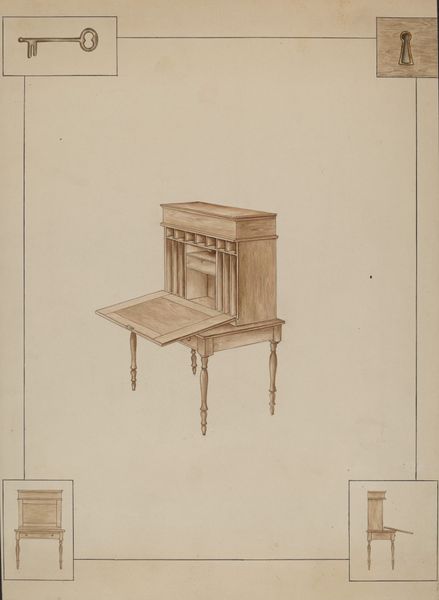
drawing, paper, pencil
#
drawing
#
paper
#
geometric
#
pencil
Dimensions: overall: 28.4 x 23 cm (11 3/16 x 9 1/16 in.) Original IAD Object: 62"high; 41"wide; upper section 31"high
Copyright: National Gallery of Art: CC0 1.0
Curator: Let's turn our attention to "Chest," a drawing by Eugene Barrell created sometime between 1935 and 1942. It's a pencil rendering on paper. Editor: At first glance, I see something rather elegant yet ghostly in its design. The linearity and bare quality create a unique presence, hovering between form and concept. It reminds me a bit of architectural renderings or technical schematics. Curator: Precisely. As a study in furniture design, the drawing underscores the evolution of domestic tastes, influenced by socioeconomic conditions during and around the Great Depression. Practicality melded with aspirations. Editor: The piece certainly speaks to that period. You know, with its simple, geometric structure, I see a deliberate avoidance of extravagance. There's an undeniable undercurrent of scarcity embedded in its clean lines and pragmatic design. The skeletal form gives it a rather unornamented personality. Curator: Exactly! The intent could be interpreted as mirroring broader societal values. Restraint in design could echo the economic struggles and shift away from lavish display prominent in earlier eras. The "Chest," as depicted here, would be easily manufactured at a low cost for mass audiences. Editor: It's fascinating how design choices serve as silent commentary on society's state. The piece underscores the importance of furniture beyond mere utility. Consider its social history as something so integral to home and identity that makes its stripped-down rendering almost poignant, as if even necessities were considered luxurious at one time. I like to think of what kind of domestic scenes might surround a finished product: a family just starting out; immigrant communities trying to create roots... Curator: Considering such perspectives truly enriches our viewing experience, allowing for reflection beyond art history, toward a larger socio-political awareness. Thanks for sharing these interesting angles. Editor: And thank you for laying the groundwork and history behind this drawing! Thinking about it in context like this makes its design feel like both an artifact and testament.
Comments
No comments
Be the first to comment and join the conversation on the ultimate creative platform.

